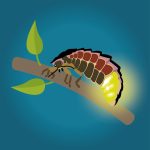Saving the small things that run the planet
 It’s not just insects, almost every species studied shows an impact when exposed to artificial light.
It’s not just insects, almost every species studied shows an impact when exposed to artificial light.
🐦 Birds are also vulnerable to artificial light, causing them to fly toward lit areas. Research shows more birds migrating over urban compared to rural areas, this deviation could have a significant impact on energy levels and lead them to stop in suboptimal habitats.
🦇 Artificial lighting can cause many problems for bats, including disrupting their roosting and feeding behaviour and their movement through the landscape; in the worst cases, causing direct harm. As all bats in the UK feed on insects the loss of food sources is also a considerable threat.
🐟 Skyglow-like light levels can affect melatonin production in freshwater fish and more generally impact freshwater ecosystems.
🌊 Artificial light is causing a biological response across nearly 2 million square kilometres of ocean.
🦀 Marine species like crabs and zooplankton are attracted to artificial lights near the shore from ports or gas facilities, which can disrupt feeding and life cycles.
🌳 Artificial lighting has been linked with trees bursting their buds more than a week earlier — a magnitude similar to that predicted for 2°C of global warming.
🐁 Hedgehogs and other mammals avoid lighting, limiting their movement in areas of high artificial light.
🐸 Light Pollution has been identified as a serious threat in areas containing reptiles and is having a detrimental effect on amphibian populations including frogs and toads.